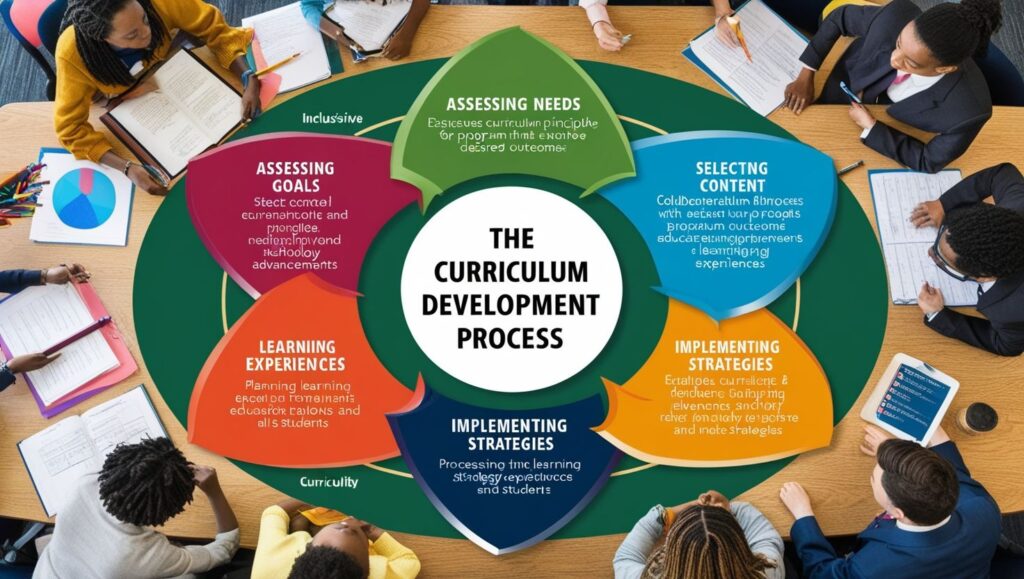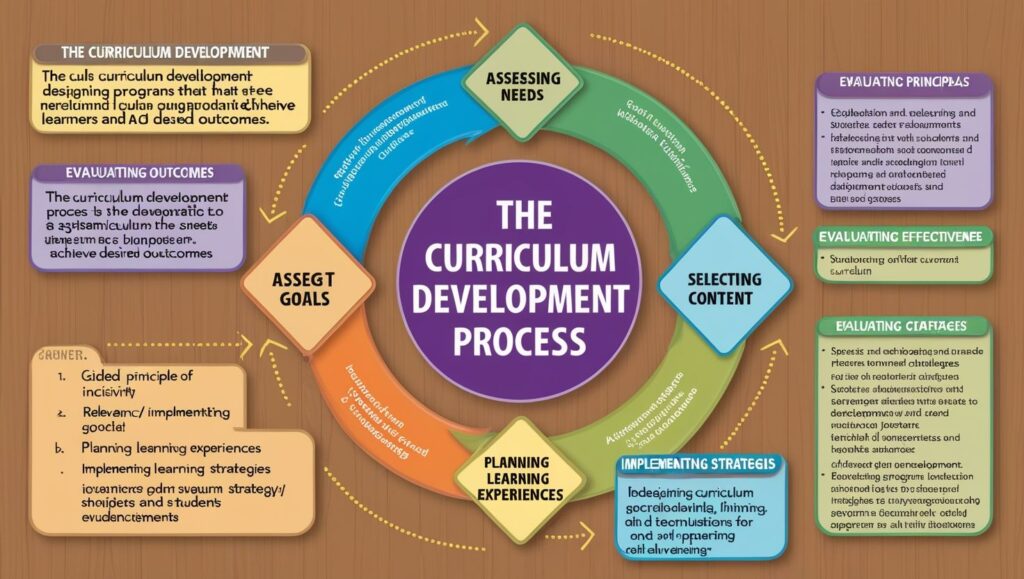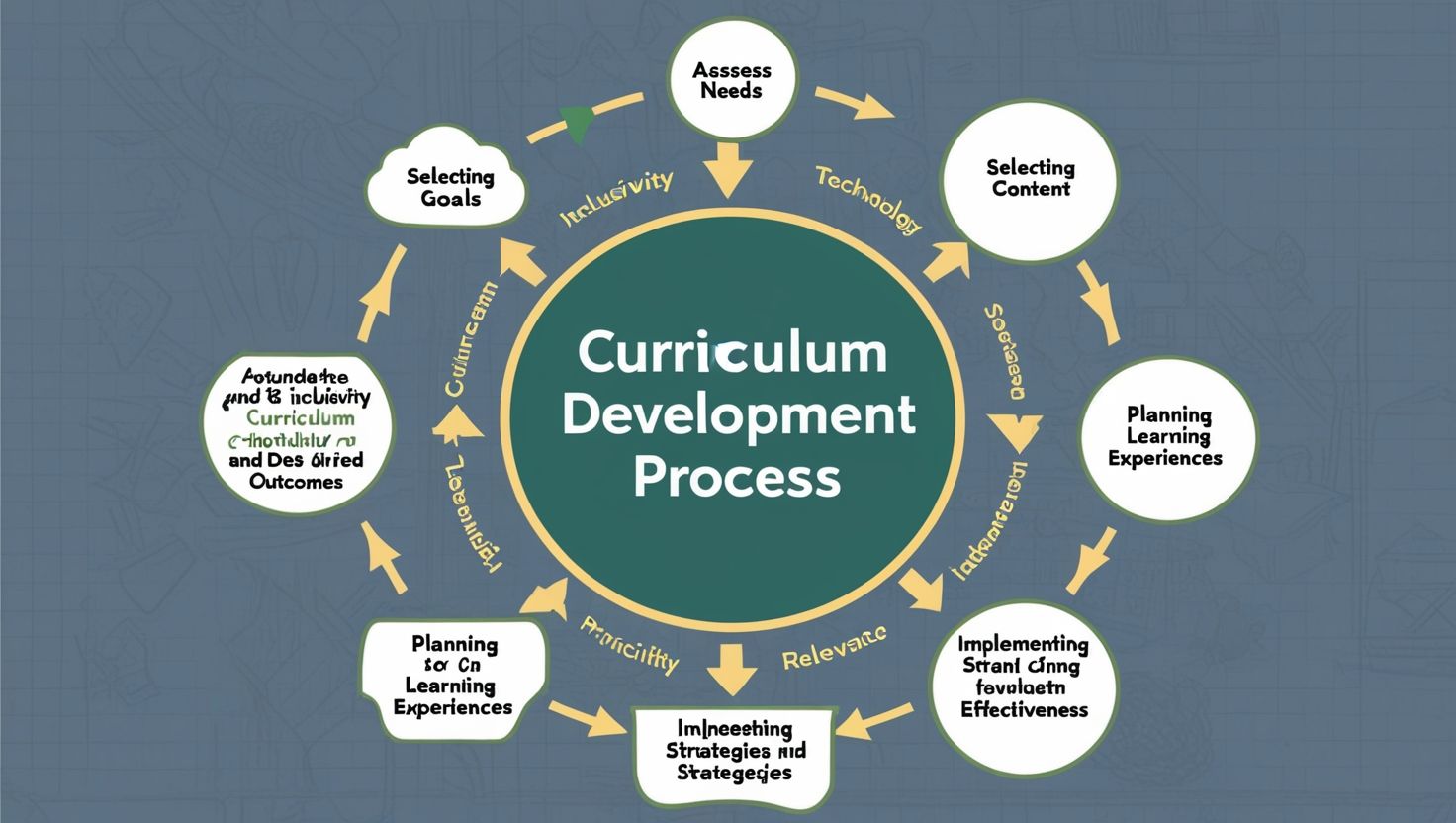Curriculum Development Process, Curriculum development is a structured process of designing and organizing content, teaching strategies, and evaluation mechanisms to meet the educational needs of students and achieve desired learning outcomes. It is a dynamic and collaborative effort that reflects societal values, scientific advancements, and pedagogical innovations. This article delves into the steps, principles, and stakeholders involved in the curriculum development process, emphasizing its critical role in shaping education systems.
What is Curriculum Development?
Curriculum development refers to the systematic planning and organization of instructional material and activities aimed at achieving educational goals. It encompasses defining objectives, selecting content, designing learning experiences, and determining assessment methods. The process ensures that education remains relevant, inclusive, and aligned with national or institutional standards.
Principles of Curriculum Development
- Learner-Centered Approach
The curriculum must prioritize the needs, interests, and developmental stages of learners. It should accommodate diverse learning styles and foster critical thinking, creativity, and problem-solving. - Relevance and Contextualization
The curriculum should be aligned with real-world applications, addressing societal, cultural, and economic contexts. Relevant content engages learners and prepares them for future challenges. - Flexibility and Adaptability
In a rapidly evolving world, the curriculum must be dynamic, allowing for modifications based on technological advancements and emerging educational trends. - Inclusivity and Equity
The process should ensure that all learners, regardless of background, have access to quality education. This involves integrating multicultural perspectives and addressing diverse needs. - Outcome-Based Learning
Clear learning outcomes guide the curriculum development process, focusing on measurable skills and knowledge that students should acquire.
Steps in the Curriculum Development Process
1. Needs Assessment
The first step involves identifying the educational needs of the target audience. This includes:
- Analyzing gaps in existing curricula.
- Engaging with stakeholders such as teachers, students, parents, and policymakers.
- Considering societal demands, technological trends, and future workforce requirements.
2. Defining Goals and Objectives
Based on the needs assessment, clear and achievable goals are established. These goals outline what students should know and be able to do at the end of the course. Objectives are specific, measurable outcomes that guide the teaching process.

3. Content Selection
The content must align with the objectives and be relevant to the learners’ needs. Factors influencing content selection include:
- Subject relevance.
- Alignment with national or institutional standards.
- Suitability for the learners’ developmental levels.
4. Designing Learning Experiences
This step involves planning instructional strategies and activities to engage students. Effective design includes:
- Incorporating interactive methods such as group discussions, projects, and hands-on activities.
- Integrating technology, such as e-learning tools and multimedia resources.
- Ensuring alignment with various learning styles.
5. Developing Assessment Tools
Assessment is integral to evaluating the effectiveness of the curriculum. Tools are designed to measure students’ progress and the achievement of learning outcomes. Common methods include:
- Formative assessments (quizzes, observations, assignments).
- Summative assessments (exams, projects, portfolios).
- Peer and self-assessments.
6. Implementation
The curriculum is introduced in educational settings, where teachers play a pivotal role in bringing it to life. Effective implementation requires:
- Teacher training and professional development.
- Availability of resources and infrastructure.
- Monitoring and support systems.
7. Evaluation and Feedback
The final step involves assessing the curriculum’s effectiveness through feedback from students, teachers, and other stakeholders. This feedback informs revisions and improvements, ensuring the curriculum remains relevant and effective.
Key Stakeholders in Curriculum Development
- Teachers
As primary implementers, teachers provide insights into practical challenges and effectiveness during the planning and execution phases. - Students
Their feedback on content relevance, difficulty, and engagement levels helps refine the curriculum to better meet learning needs. - Policymakers and Administrators
They ensure that the curriculum aligns with educational policies, national standards, and broader societal goals. - Parents and Community Members
Their perspectives contribute to a holistic understanding of students’ needs and the socio-cultural context. - Subject Matter Experts
These professionals ensure the content’s accuracy and relevance, aligning it with advancements in their respective fields.
Challenges in Curriculum Development
- Balancing Standardization and Localization
While maintaining national standards, curricula must address local needs and cultural contexts, which can be challenging. - Resource Constraints
Developing and implementing a curriculum requires financial, human, and infrastructural resources that may not always be available. - Resistance to Change
Introducing new curricula often faces resistance from educators, institutions, or communities accustomed to traditional methods. - Technological Integration
Ensuring equitable access to technology for all learners can be a significant hurdle in modern curriculum development. - Continuous Updation
Keeping the curriculum up-to-date with the latest knowledge and skills demands ongoing effort and adaptability.

Trends in Curriculum Development
- Integration of Technology
Digital tools, e-learning platforms, and virtual reality are transforming how curricula are designed and delivered. - Competency-Based Education (CBE)
Emphasizing skills over content knowledge, CBE focuses on preparing students for real-world challenges. - Global Citizenship Education
Curricula now include topics such as sustainability, human rights, and cultural diversity to develop global awareness. - Personalized Learning
Leveraging data and technology, personalized curricula cater to individual learners’ needs, strengths, and interests. - Interdisciplinary Approaches
Integrating subjects like science, technology, engineering, arts, and mathematics (STEAM) fosters holistic learning.
Examples of Curriculum Development Frameworks
- Tyler’s Model
A classic approach focusing on four key questions:- What educational purposes should the school seek to attain?
- What educational experiences can be provided to attain these purposes?
- How can these experiences be effectively organized?
- How can we determine whether these purposes are being attained?
- Taba’s Model
This grassroots approach begins with teachers identifying student needs and designing units of instruction. It emphasizes inductive reasoning and pilot testing. - Backward Design
Proposed by Wiggins and McTighe, this method starts with defining desired outcomes and then planning assessments and learning experiences accordingly.
Conclusion
The curriculum development process is a cornerstone of effective education, bridging the gap between theory and practice. It requires a collaborative, inclusive, and iterative approach to meet the diverse needs of learners and society. By adhering to established principles and embracing emerging trends, educators and policymakers can craft curricula that empower students to thrive in an ever-changing world.

1 thought on “Curriculum Development Process”
Comments are closed.